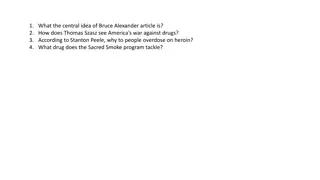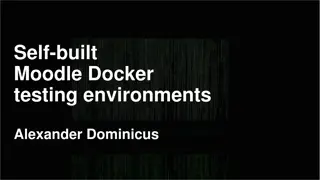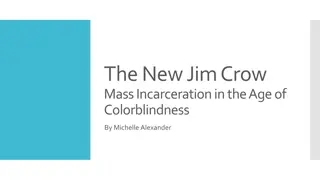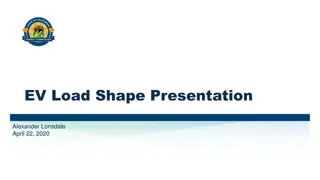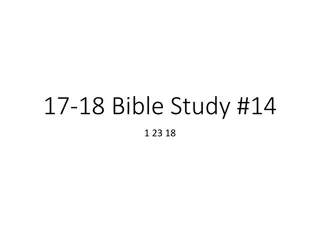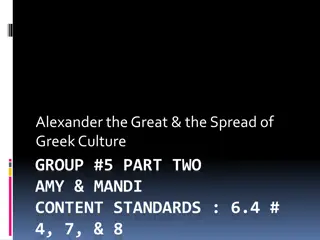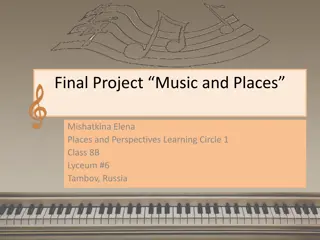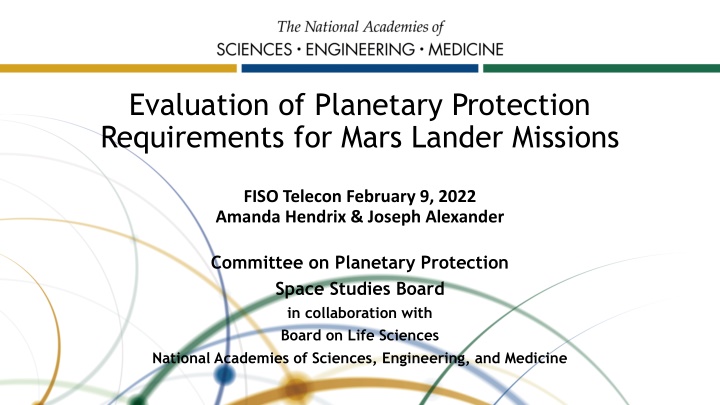
Planetary Protection for Mars Lander Missions Evaluation
The evaluation of planetary protection requirements for Mars lander missions is crucial for adapting to the changing landscape of Mars exploration. With a focus on identifying suitable locations for missions with reduced bioburden criteria, this assessment considers various criteria and methods for ensuring mission compliance. The involvement of national space agencies, private enterprises, and the potential for human exploration missions add complexity to the evolving nature of Mars missions.
Download Presentation

Please find below an Image/Link to download the presentation.
The content on the website is provided AS IS for your information and personal use only. It may not be sold, licensed, or shared on other websites without obtaining consent from the author. If you encounter any issues during the download, it is possible that the publisher has removed the file from their server.
You are allowed to download the files provided on this website for personal or commercial use, subject to the condition that they are used lawfully. All files are the property of their respective owners.
The content on the website is provided AS IS for your information and personal use only. It may not be sold, licensed, or shared on other websites without obtaining consent from the author.
E N D
Presentation Transcript
Evaluation of Planetary Protection Requirements for Mars Lander Missions FISO Telecon February 9, 2022 Amanda Hendrix & Joseph Alexander Committee on Planetary Protection Space Studies Board in collaboration with Board on Life Sciences National Academies of Sciences, Engineering, and Medicine
Committee Roster Joseph K. Alexander, Independent Consultant, Co-Chair Amanda R. Hendrix, Planetary Science Institute, Co-Chair Angel Abbud-Madrid, Colorado School of Mines Anthony Colaprete, NASA Ames Research Center Michael J. Daly, Uniformed Services University of the Health Sciences David P. Fidler, Council on Foreign Relations Sarah A. Gavit, Jet Propulsion Laboratory Andrew D. Horchler, Astrobotic Technology, Inc. David M. Karl, NAS, University of Hawaii at Manoa Eugene H. Levy, Rice University Robert E. Lindberg, Jr., Independent Consultant Margarita M. Marinova, Amazon Project Kuiper A. Deanne Rogers, Stony Brook University, The State University of New York Gerhard H. Schwehm, European Space Agency (retired) Trista J. Vick Majors, Michigan Technological University Daniel Nagasawa, Study Director, SSB Andrea Hodgson, Senior Program Officer, BLS Nancy Connell, Senior Scientist, BLS Megan Chamberlain, Senior Program Assistant, SSB SPACE STUDIES BOARD (SSB) 2 COMMITTEE ON PLANETARY PROTECTION (CoPP) EVALUATION OF BIOBURDEN REQUIREMENTS FOR MARS MISSIONS FISO SEMINAR 2022
Changing context for Mars missions Number of national space agencies involved has increased. Private-sector enterprises seek to enable commercial missions. Nature of missions is evolving to feature more diversity in purposes and technologies. A planetary protection policy that responds to these changes will need to consider how much science has learned about Mars. Opportunity exists to take a more nuanced, and in some cases, more permissive approach to activities on Mars. 3
Statement of Task Identify criteria (e.g., temperature, water activity) for determining locations or regions on Mars that are potentially suitable for missions of less restrictive bioburden than the current requirements for Category IV. Consider whether mission activities need to be constrained to an area of a specific diameter, including off-nominal operation margins. Provide methods (e.g., observational data, models) a mission could use to show it meets the criteria. Illustrate the use of those criteria by identifying some potentially acceptable locations that are suitable for reduced bioburden criteria. Consider the appropriateness of mission activities that occur beneath the martian surface in these locations and how deep such mission activities should be allowed. Comment briefly on whether these locations may be suitable for an eventual human exploration mission. Consider the views of the broad community of stakeholders, including Mars and astrobiological scientists, government agencies dealing with spaceflight and exploration, and the aerospace industry, including emerging commercial entities. SPACE STUDIES BOARD (SSB) 4 COMMITTEE ON PLANETARY PROTECTION (CoPP) EVALUATION OF BIOBURDEN REQUIREMENTS FOR MARS MISSIONS FISO SEMINAR 2022
The Committees findings can lead to making portions of Mars more accessible to both commercial and government endeavors by relaxing planetary protection requirements while remaining careful about access to potential habitable zones. SPACE STUDIES BOARD (SSB) 5 COMMITTEE ON PLANETARY PROTECTION (CoPP) EVALUATION OF BIOBURDEN REQUIREMENTS FOR MARS MISSIONS FISO SEMINAR 2022
Important Considerations in the Committees Analysis Approaches to planetary protection: Current reduce spacecraft bioburden to below a specified, fixed limit. Alternative tailor mitigation steps in response to assessment of likelihood and consequences of different kinds of risks. NASA vs. non-NASA missions SPACE STUDIES BOARD (SSB) 6 COMMITTEE ON PLANETARY PROTECTION (CoPP) EVALUATION OF BIOBURDEN REQUIREMENTS FOR MARS MISSIONS FISO SEMINAR 2022
Important Considerations in the Committees Analysis Factors affecting risk of microbial contamination: Delivery Survival Proliferation Transport Factors affecting microbial survivability and growth Temperature Water/Desiccation Atmosphere Sources of nutrients and energy SPACE STUDIES BOARD (SSB) 7 COMMITTEE ON PLANETARY PROTECTION (CoPP) EVALUATION OF BIOBURDEN REQUIREMENTS FOR MARS MISSIONS FISO SEMINAR 2022
Study Outline + Findings Chapter 1: Introduction & discussion of previous related reports, presentation of charter & Statement of Task Chapter 2: Astrobiological Possibilities on Mars How viable is astrobiology on Mars? This question and its investigation forms the foundation of our report. Finding 1: Discovery of indigenous life on Mars would be a signal event in the development of human knowledge. Preserving unambiguous separation or distinguishability of terrestrial organisms from indigenous martian organisms, by application of planetary protection protocols is essential. SPACE STUDIES BOARD (SSB) 8 COMMITTEE ON PLANETARY PROTECTION (CoPP) EVALUATION OF BIOBURDEN REQUIREMENTS FOR MARS MISSIONS FISO SEMINAR 2022
Study Outline + Findings Chapter 3: Considerations for Reducing Bioburden Requirements The Committee considered 1. conditions for survival, proliferation and transport of terrestrial biota 2. Special Regions on Mars 3. criteria for landing sites (with reduced bioburden requirements), how to validate those criteria, and examples of potentially acceptable landing sites Finding 2: The environment on Mars makes the survival, growth, and proliferation of terrestrial organisms on the surface, or suspended in the atmosphere, highly unlikely as a source of harmful contamination. However, transport of a viable terrestrial organism to potentially habitable subsurface environments, such as caves, creates a risk of harmful contamination. SPACE STUDIES BOARD (SSB) 9 COMMITTEE ON PLANETARY PROTECTION (CoPP) EVALUATION OF BIOBURDEN REQUIREMENTS FOR MARS MISSIONS FISO SEMINAR 2022
Study Outline + Findings Chapter 3: Considerations for Reducing Bioburden Requirements The Committee considered 1. conditions for survival, proliferation and transport of terrestrial biota 2. Special Regions on Mars 3. criteria for landing sites (with reduced bioburden requirements), how to validate those criteria, and examples of potentially acceptable landing sites Finding 3: Some regions of the martian subsurface appear to be the most promising environment for (1) finding potential extant or extinct indigenous martian organisms; and proliferation. (2) providing terrestrial organisms with conditions that might support their survival and However, the martian subsurface remains largely unexplored and uncharacterized. SPACE STUDIES BOARD (SSB) 10 COMMITTEE ON PLANETARY PROTECTION (CoPP) EVALUATION OF BIOBURDEN REQUIREMENTS FOR MARS MISSIONS FISO SEMINAR 2022
Study Outline + Findings Chapter 3: Considerations for Reducing Bioburden Requirements The Committee considered 1. conditions for survival, proliferation and transport of terrestrial biota 2. Special Regions on Mars 3. criteria for landing sites (with reduced bioburden requirements), how to validate those criteria, and examples of potentially acceptable landing sites Finding 4: Relaxed bioburden requirements could be appropriate for missions that do not access the subsurface, or for missions that access the subsurface (down to ~one meter) where no evidence of ice exists. Exceptions to this finding include buffer zones around subsurface access points and sites of astrobiological interest. Finding 5: Estimates of habitat connectivity and of brine transport within subsurface ice are needed to evaluate the risk of harmful contamination via microbial proliferation as a result of subsurface mission activities within permafrost, ice sheets or polar ice. Finding 6: To avoid contamination of subsurface access points and sites of astrobiological interest, a mission with relaxed bioburden levels would need to land and operate at a conservative buffer distance from such locations. SPACE STUDIES BOARD (SSB) 11 COMMITTEE ON PLANETARY PROTECTION (CoPP) EVALUATION OF BIOBURDEN REQUIREMENTS FOR MARS MISSIONS FISO SEMINAR 2022
Locations where Neutron Spectroscopy or Thermal IR Potentially Detect Ice in the Top Meter SPACE STUDIES BOARD (SSB) 12 COMMITTEE ON PLANETARY PROTECTION (CoPP) EVALUATION OF BIOBURDEN REQUIREMENTS FOR MARS MISSIONS FISO SEMINAR 2022
Summary Conclusion: Where Robotic Lander Bioburden Requirements Could Be Relaxed Due to the sterilizing conditions of the Martian surface, the Committee's considerations of bioburden relaxation focused on avoiding potential access to the subsurface by terrestrial microorganisms. Information on subsurface access points is uncertain, and knowledge of conditions in the Martian subsurface is incomplete and mostly model-based. Bioburden requirements could be relaxed if the following criteria are met: 1a) Mission activities do not include subsurface activities, OR 1b) For mission activities as deep as 1 m, the landing site is in a location where no ice is detected in neutron or thermal data; AND 2) For both cases above, the landing site is a conservative distance from any subsurface access point, to be determined considering wind conditions for the location and season and best estimates of microorganism survival time in the surface UV environment. SPACE STUDIES BOARD (SSB) 13 COMMITTEE ON PLANETARY PROTECTION (CoPP) EVALUATION OF BIOBURDEN REQUIREMENTS FOR MARS MISSIONS FISO SEMINAR 2022
Study Findings Chapter 3: Considerations for Reducing Bioburden Requirements Finding 7: To minimize the risk of harmful contamination, some pre-launch cleanliness provisions are still needed for missions landing in regions of Mars with lower bioburden requirements than under current Category IV requirements. SPACE STUDIES BOARD (SSB) 14 COMMITTEE ON PLANETARY PROTECTION (CoPP) EVALUATION OF BIOBURDEN REQUIREMENTS FOR MARS MISSIONS FISO SEMINAR 2022
Study Findings Chapter 4: Risk Management and Post-Landing Approaches to Planetary Protection Finding 8: Planetary protection requirements for Mars missions can be met using a risk management approach as an alternative approach to meeting current NASA planetary protection requirements found in NPR 8020.012D Finding 9: In-situ bioburden reduction may present a cost-effective alternative or complement to prelaunch bioburden control and recontamination prevention measures. SPACE STUDIES BOARD (SSB) 15 COMMITTEE ON PLANETARY PROTECTION (CoPP) EVALUATION OF BIOBURDEN REQUIREMENTS FOR MARS MISSIONS FISO SEMINAR 2022
Summary Conclusion: Risk Management Approach to Comply with Planetary Protection Requirements for Mars Missions After the planetary protection requirements for a mission to Mars are established, a risk management approach represents a method for the mission to meet those requirements, as an alternative to existing NASA or COSPAR planetary protection policy. This approach would apply a risk management framework that: Step 1. Identifies how the mission might produce harmful contamination Step 2. Assesses the likelihood and consequence of those possibilities Step 3. Ranks those risks by assigning a risk rating to each (from low to high) Step 4. Identifies validated pre-launch and/or in-situ methods to mitigate each risk rated above a certain threshold (e.g., low-medium risk) The Committee provides a simplified example of such a risk management approach, which NASA and other stakeholders could develop into a more robust framework for planetary protection purposes for Mars missions and, potentially, for missions to other solar system bodies. SPACE STUDIES BOARD (SSB) 16 COMMITTEE ON PLANETARY PROTECTION (CoPP) EVALUATION OF BIOBURDEN REQUIREMENTS FOR MARS MISSIONS FISO SEMINAR 2022
Example Risk Matrix Consequence 1 - Harmful contamination of an area of no known interest for prebiotic evolution or the search for evidence of life 2 - Harmful contamination of an area of potential interest for prebiotic evolution or the search for evidence of life 3 - Harmful contamination of an area of known interest for prebiotic evolution or the search for evidence of life 4 - Harmful contamination of a potential special region 5 - Harmful contamination of a special region, or that is global 5 - Frequent Low Med Medium Med Hi High High 4 - Occasional Low Low Med Medium Med Hi High Likelihood 3 - Remote Low Low Med Medium Med Hi Med Hi 2 - Improbable Low Low Med Low Med Medium Med Hi 1 - Extremely Improbable Low Low Low Med Medium Medium SPACE STUDIES BOARD (SSB) 17 COMMITTEE ON PLANETARY PROTECTION (CoPP) EVALUATION OF BIOBURDEN REQUIREMENTS FOR MARS MISSIONS FISO SEMINAR 2022
The Committees findings can lead to portions of Mars becoming more accessible to commercial endeavors by relaxing planetary protection requirements while remaining cautious about access to potential habitable zones SPACE STUDIES BOARD (SSB) 18 COMMITTEE ON PLANETARY PROTECTION (CoPP) EVALUATION OF BIOBURDEN REQUIREMENTS FOR MARS MISSIONS FISO SEMINAR 2022
Thank You Questions? Please see the SSB website for more information, and downloadable free reports, and other ongoing activities: https://www.nationalacademies.org/ssb/space-studies- board SPACE STUDIES BOARD (SSB) 19 COMMITTEE ON PLANETARY PROTECTION (CoPP) EVALUATION OF BIOBURDEN REQUIREMENTS FOR MARS MISSIONS FISO SEMINAR 2022
Overview of Mars Planetary Protection Categories Planetary protection Category IV applies to missions to bodies of significant interest to the process of chemical evolution and/or origin of life and where scientific opinion provides a significant chance that contamination could compromise future investigations. Category IV missions to Mars are subdivided into IVa, IVb, and IVc. Category IVa missions are those not carrying instruments designed to investigate extant Martian life. Cat IVa missions include Pathfinder, Mars Exploration Rovers, Mars Science Laboratory/Curiosity, and Insight. Category IVb missions are those carrying instruments designed to investigate extant martian life. Cat IVb missions include Phoenix and Mars 2020. Category IVc missions are those accessing special regions on Mars, even if not carrying life- detection instrumentation. The Viking landers were Cat IVc. 20
Important Considerations in the Committees Analysis C. The surface and subsurface of Mars offer different environmental conditions that contribute to different contamination risks. D. There are still a lot of unknowns about 1) survivability of terrestrial organisms under Mars conditions and 2) locations of access points to potentially habitable subsurface regions on Mars SPACE STUDIES BOARD (SSB) 21 COMMITTEE ON PLANETARY PROTECTION (CoPP) EVALUATION OF BIOBURDEN REQUIREMENTS FOR MARS MISSIONS FISO SEMINAR 2022
Important Considerations in the Committees Analysis A. Metabolic states of microorganisms: Growth -- cells are actively dividing; Maintenance -- cells remain active and conduct measurable catabolic and/or anabolic processes but are not actively dividing; Dormancy -- cells are not measurably metabolizing but may be conducting some maintenance activities; Deceased -- cells are neither replication-proficient nor capable of becoming metabolically active but may still contain intact biomolecules. B. Factors affecting risk of microbial contamination: Delivery Survival Proliferation Transport SPACE STUDIES BOARD (SSB) 22 COMMITTEE ON PLANETARY PROTECTION (CoPP) EVALUATION OF BIOBURDEN REQUIREMENTS FOR MARS MISSIONS FISO SEMINAR 2022

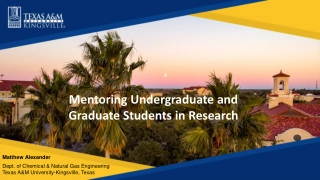
![[PDF] DOWNLOAD Spell of the Highlander: The Highlander Series, Book 7](/thumb/42282/pdf-download-spell-of-the-highlander-the-highlander-series-book-7.jpg)

